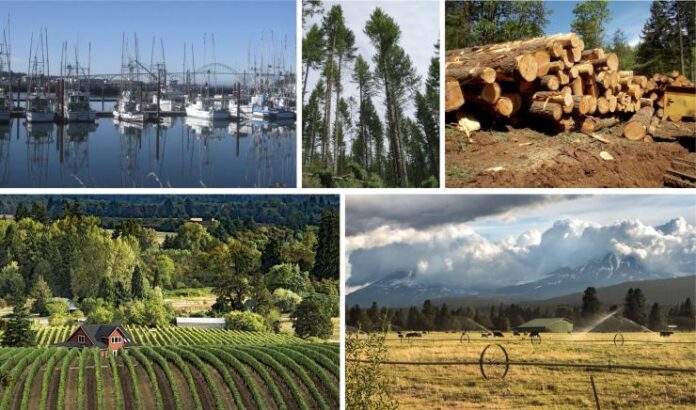The conservation of natural resources is a fundamental environmental practice aimed at preserving the earth’s natural assets for current and future generations. It involves the sustainable management and use of natural resources such as water, soil, plants, animals, and minerals. The goal is to ensure that these resources continue to support life and contribute to the well-being of all species, including humans.
- SUSTAINABLE USE: Utilizing natural resources in a way that meets current needs without compromising the ability of future generations to meet their own. This involves practices like sustainable forestry, fisheries, and agriculture.
- PROTECTION OF BIODIVERSITY: Conserving diverse ecosystems, species, and genetic variations is crucial for maintaining the resilience and functionality of the biosphere. Protected areas, such as national parks and wildlife reserves, play a significant role in this effort.
- POLLUTION PREVENTION AND WASTE REDUCTION: Minimizing pollution and waste helps protect natural resources from degradation. This includes reducing emissions, managing waste responsibly, and promoting recycling and the use of renewable resources.
- WATER CONSERVATION: Water is a vital resource that needs careful management due to its limited availability in many regions. Practices include efficient water use, protecting watersheds, and treating wastewater.
- SOIL CONSERVATION: Soil is essential for agriculture and supporting ecosystems. Conservation techniques include preventing erosion, maintaining soil fertility, and practicing sustainable farming methods.
- ENERGY CONSERVATION: Reducing energy consumption and increasing the use of renewable energy sources helps conserve fossil fuels and reduce environmental impact. The challenges, in the way, are significant, especially in the face of climate change and increasing global demand for natural resources, but the collective commitment to conservation can lead to innovative solutions and sustainable practices.
The origin and development of natural resources are deeply intertwined with the Earth’s geological, biological, and atmospheric processes over billions of years. Formation of Natural Resources:
- WATER: Earth’s water is ancient and has been part of the planet since its early formation or was delivered by icy comets. Over time, it has cycled through the oceans, atmosphere, and land, shaping the planet’s surface and supporting life.
- SOIL: Soil formation is a slow process resulting from the weathering of rocks and the decomposition of organic matter over thousands to millions of years. Biological activity, climate, topography, and parent rock material influence soil characteristics.
- MINERALS: Minerals have formed through various geological processes, including crystallization from magma, precipitation from solutions, and changes in pre-existing minerals under high temperature and pressure within the Earth’s crust.
- Forests: Forests have developed over hundreds of millions of years, with trees and plants evolving to adapt to various climates and terrains. Forest ecosystems are shaped by factors like climate, soil type, and disturbances such as fire and human activity.
- WILDLIFE: The diversity of life on Earth has evolved over approximately 3.8 billion years. Natural selection, genetic variation, and environmental changes have driven the evolution and adaptation of species to various ecosystems.
- AIR: Earth’s atmosphere formed from volcanic gases and was later modified by photosynthetic organisms, which increased oxygen levels, allowing for the development of aerobic life forms.
- Fossil fuels: Coal, oil, and natural gas are organic in origin, formed from the remains of plants and animals that lived millions of years ago. These remains were buried under sediment and subjected to high pressure and temperature, transforming them into fossil fuels.
DEVELOPMENT OF NATURAL RESOURCES
- This process has evolved from basic use to sophisticated management and technology-driven exploitation:
- EARLY USE: Early humans utilized natural resources for basic needs like food, shelter, and warmth. They hunted, gathered, fished, and later developed agriculture and domesticated animals.
- AGRICULTURAL REVOLUTION: The development of agriculture approximately 10,000 years ago allowed for the more systematic use of soil and water resources, leading to the establishment of settled communities and civilizations.
- INDUSTRIAL REVOLUTION: The industrial revolution marked a significant shift in the use of natural resources, with a focus on fossil fuels and minerals to power machinery, transport, and urbanization, leading to rapid economic growth but also environmental degradation.
- MODERN ERA: Today, the development of natural resources involves advanced technologies for extraction, processing, and management. Balancing the use of natural resources with conservation and sustainability efforts is crucial for the health of the planet and future generations.
Conservation of natural resources involves various strategies and methods aimed at protecting, managing, and sustaining the environment for future generations:
SUSTAINABLE RESOURCE MANAGEMENT
SUSTAINABLE AGRICULTURE: Practices like crop rotation, organic farming, integrated pest management, and agroforestry enhance soil fertility and reduce the need for chemical fertilizers and pesticides, conserving soil and water resources.
SUSTAINABLE FORESTRY: This involves selective logging, reforestation, and afforestation efforts to ensure forests continue to provide timber, habitat, and ecosystem services without leading to deforestation or degradation.
WATER CONSERVATION: Techniques include rainwater harvesting, efficient irrigation methods, fixing leaks, and using water-saving appliances to reduce water waste.
PROTECTION OF ECOSYSTEMS AND BIODIVERSITY
ESTABLISHING PROTECTED AREAS: Creating national parks, wildlife reserves, and marine protected areas to safeguard habitats and species from human activities.
WILDLIFE CONSERVATION: Implementing laws and regulations to protect endangered species and their habitats, combating poaching and illegal wildlife trade.
HABITAT RESTORATION: Restoring ecosystems that have been degraded or destroyed, such as wetlands, forests, and coral reefs, to their natural state.
POLLUTION PREVENTION AND WASTE MANAGEMENT
REDUCING POLLUTION: Implementing regulations and technologies to reduce air, water, and soil pollution from industrial, agricultural, and urban sources.
RECYCLING AND REUSE: Promoting the recycling of materials like paper, glass, and plastics, and encouraging the reuse of products to reduce waste and conserve resources.
MINIMIZING PLASTIC USE: Reducing the use of single-use plastics and promoting alternatives to prevent plastic pollution in oceans and landscapes.
ENERGY CONSERVATION AND RENEWABLE ENERGY
ENERGY EFFICIENCY: Improving the energy efficiency of buildings, appliances, and transportation to reduce energy consumption and greenhouse gas emissions.
RENEWABLE ENERGY SOURCES: Increasing the use of renewable energy sources such as solar, wind, hydro, and geothermal to reduce dependency on fossil fuels.
EDUCATION AND AWARENESS
ENVIRONMENTAL EDUCATION: Educating the public about the importance of conservation and sustainable practices to encourage responsible behaviour towards the environment.
COMMUNITY INVOLVEMENT: Engaging local communities in conservation efforts, recognizing their traditional knowledge and practices, and involving them in decision-making processes.
POLICY AND LEGISLATION
ENVIRONMENTAL LAWS AND REGULATIONS: Implementing laws that protect air, water, and soil quality; manage waste; and conserve wildlife and natural habitats.
INTERNATIONAL AGREEMENTS: Participating in international treaties and agreements aimed at addressing global environmental issues, such as the Convention on Biological Diversity and the Paris Agreement on climate change. These methods are not mutually exclusive and are often most effective when implemented in an integrated manner, addressing multiple aspects of conservation and sustainable use of natural resources.























